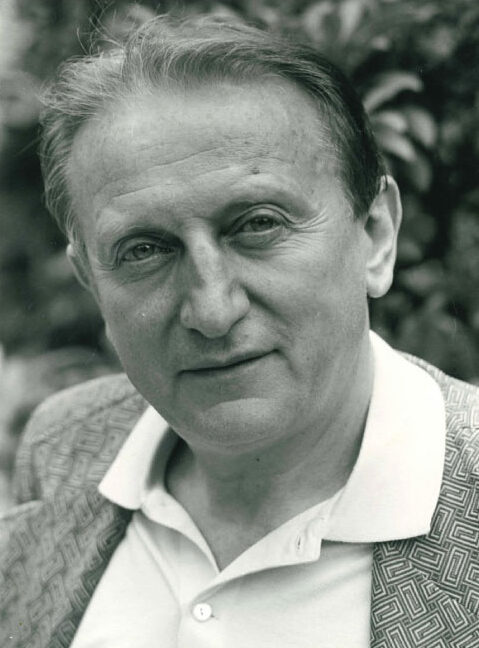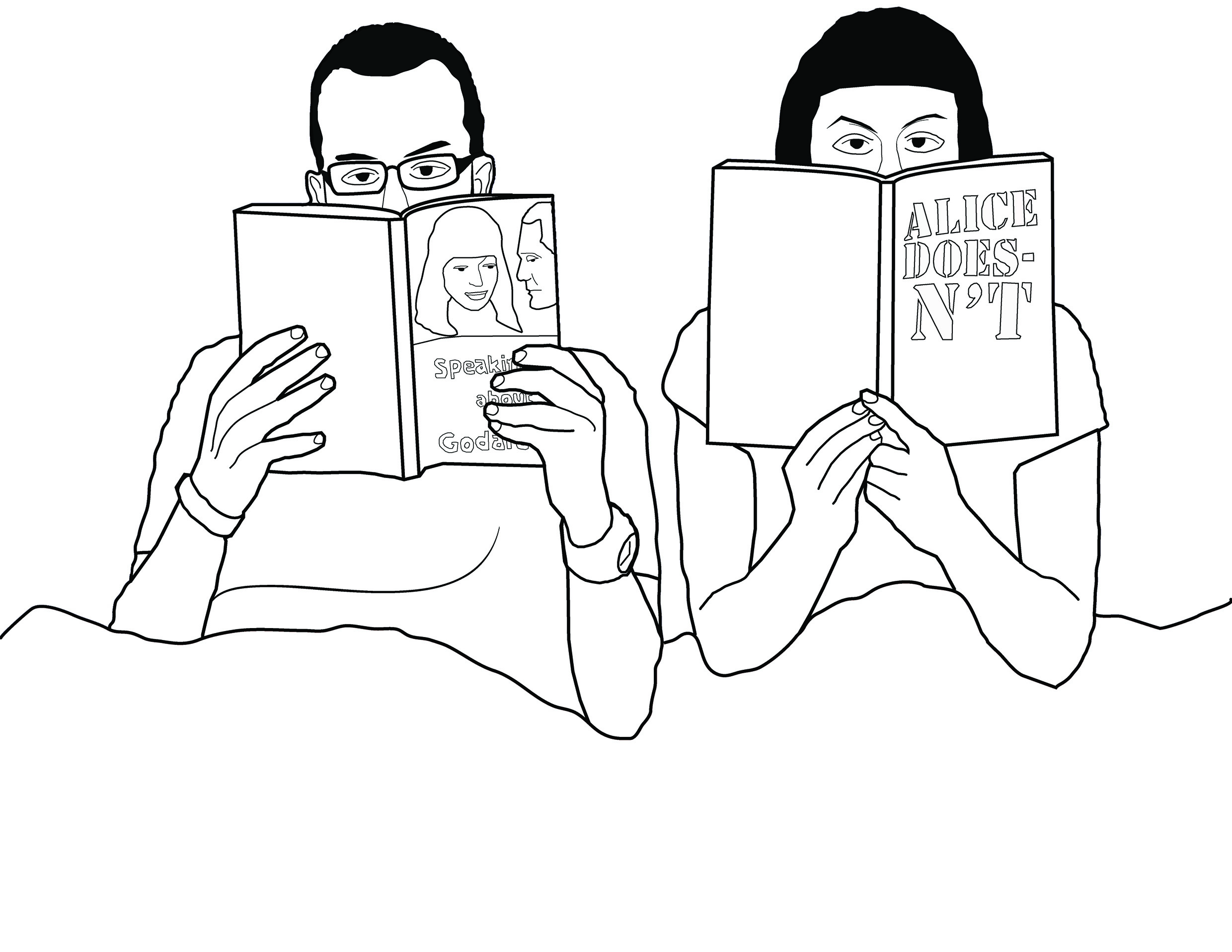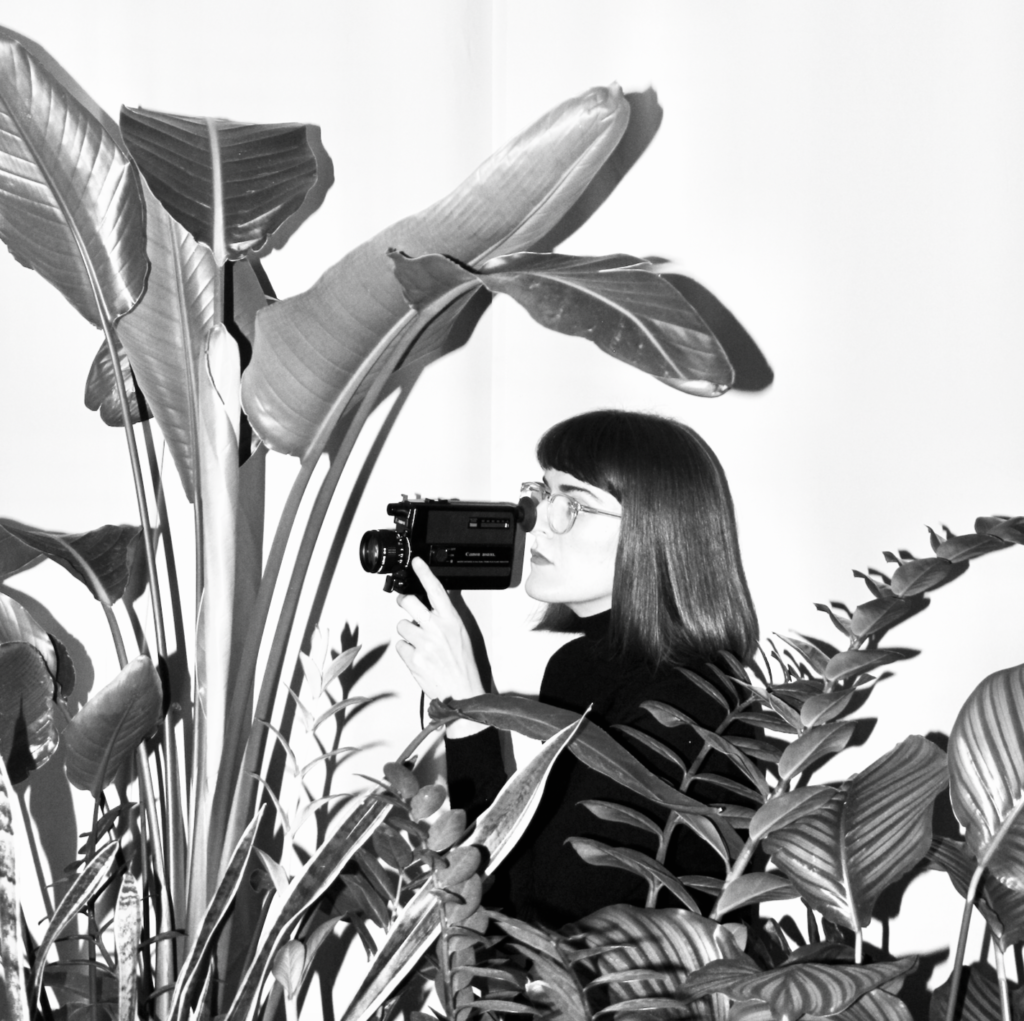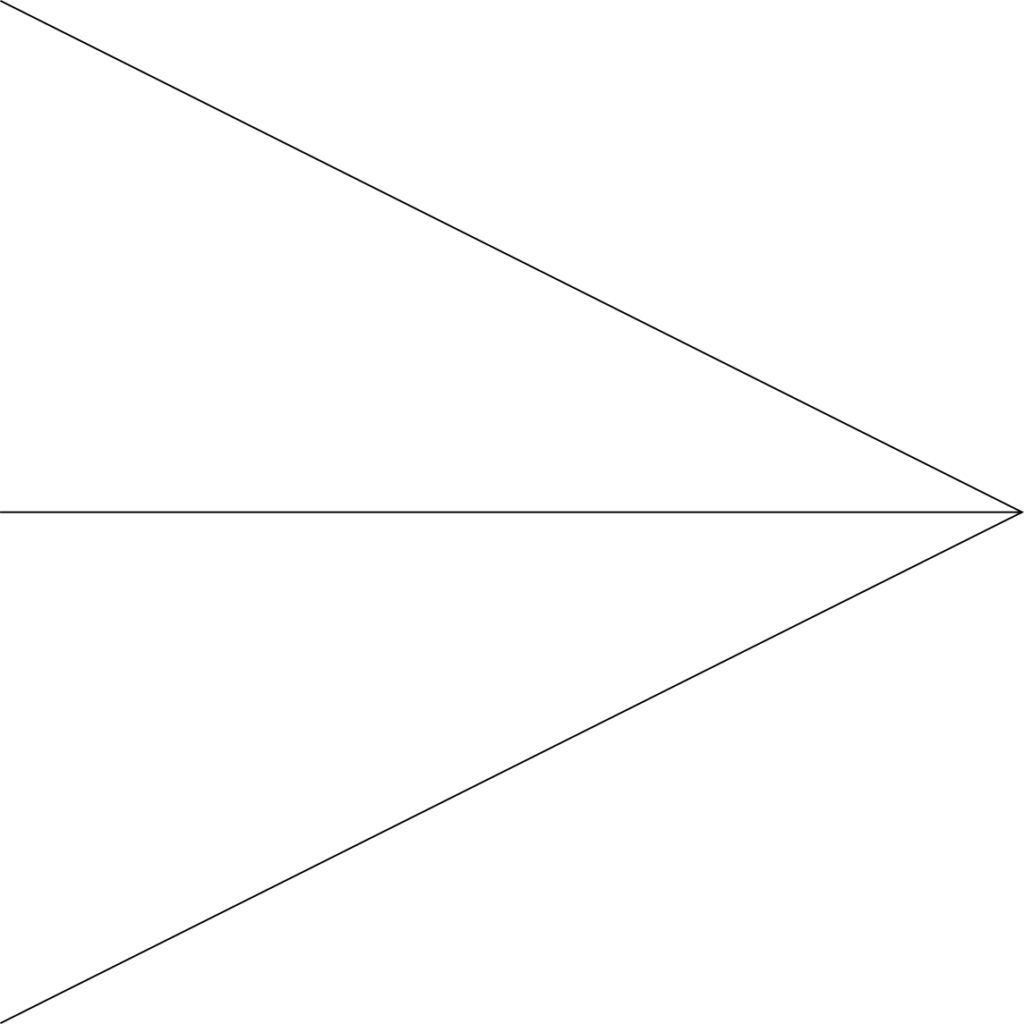Artists
Vlada Petric
Vlada Petrić (1928 – 2019) was an eminent film theorist, the Henry Luce Chair in Cinema at Harvard University, and the co-founder and curator of the Harvard Film Archive. He was the first recipient of a PhD in film studies in the United States. Throughout his creative career in Europe and in the United States, Petrić directed for film, television and theater, focusing on producing and directing experimental video essays later in his life.
Works distributed:
Emily Dickinson: Three B’s
2024, 51 min, digital video
– A video essay that explores the life and work of the celebrated poet Emiliy Dickinson. Petrić completed the final edit only a few months before his death in November 2019. Additional post-production work was completed by Kinopravda Institute in 2022-23.
Symphony of Hands
2007, 10 min, digital video
– A polyphonic montage of images of hands throughout the history of art. Inspired by and dedicated to Slavko Vorkapich, the original maestro of film montage.
Unmerciful Angel
2006, 10 min, digital video
– A response to the NATO bombardment during the Yugoslav Wars of the 1990s.


Igor Simić
Igor Simić is a Serbian-American artist who completed his studies at Columbia University in New York. He is the co-founder and creative director of Demagog Studio in Belgrade, which produces video games with an eco-critical focus. In 2022 his visual art was featured as part of Manifesta 14, while his video game The Cub was an official selection as part of the gaming section at Tribeca Film Festival. His award-winning short films and videos have shown at Alternative Film Video in Belgrade, Edinburgh International Film Festival, School of the Art Institute of Chicago, and many other places. Simić is represented by Galerie Anita Beckers in Frankfurt.
Works distributed:
Late Night Weltschmerz
2023, 3 min, digital video
– Late Night TV with Mina as your melancholic host.
Don’t Be Fake
2023, 4 min, digital video
– An episode of sing-along Post Fake News.
Melancholic Drone
2015, 7 min, digital video
– During his last morning in Belgrade, a military drone reflects on his wasted existence as a drone out of combat, while flying on autopilot to a couple having sex, a route his previous operator would take to spy on them.
Cost-Benefit-Love
2014, 10 min, digital video
– Two lovers, cost-benefit analysis and Rodin’s “The Kiss.” An exploration of Zygmunt Bauman’s idea of Liquid Love.
The Thinker in the Supermarket
2013, 7 min, digital video
– Rodin’s “Thinker” vs. a supermarket shelf.
Doplgenger (Isidora Ilić + Boško Prostran)
Doplgenger is an artist duo from Belgrade, comprising Isidora Ilić and Boško Prostran. The work of Doplgenger deals with the relation between art and politics by exploring the regimes of moving images and the modes of their reception. They rely on the tradition of experimental and avant-garde film, and through some of the actions of these traditions intervene on the existing media products or work in expanded cinema forms. In addition to the moving image, their work is realised through text, installation, performance, lecture and discussion. Their work has shown at Videobrasil Biennial in São Paulo, Festival International des Cinémas Différents et Expérimentaux in Paris, EXiS – Experimental Film and Video Festival in Seoul, European Media Art Festival in Osnabrück and many other places.
Works distributed:
Fragments Untitled #6
2022, 6 min, digital video
– The two best football teams in Yugoslavia met at Maksimir Stadium in Zagreb on May 13, 1990. The match was never played. Fragments Untitled #6 vivisects media footage of the event. The video is part of an ongoing series of works which researches the politics of media images that participated in creating the historical narratives of Yugoslavia in the period of 1980-2000.
A Record of Landscape Without Prehistory
2020, 14 min, digital video
– A visual story of loss and the sadness of memories slipping in a desolated children’s health resort in the coastal town of Krvavica, Croatia. The title is borrowed from a poem by the Yugoslav surrealist and revolutionary poet Oskar Davičo, which is an attempt to record the inner images left without music and sonority.
Surplus
2008, 6 min, digital video
– Formally intervening with footage of commercials, this experimental video allows one to rethink images while creating a narrative which discovers one of many skillfully covered senses of media images. As the title suggests this video performs Lacan’s opinion that in contemporary capitalism ‘surplus value’ is no longer capitalized for later libidinal enjoyment – nowadays surplus value is re-invested in the production process.
Johnny’s Video
2006, 3 min, digital video
– Johnny’s Video deconstructs the representation of women on film. Experimenting with found footage this video piece creates a meta-narrative with inspirations that can be traced in the feminist film theory of Laura Mulvey.


Miljana Niković
Miljana Niković (Belgrade/Berlin) is an architect and audiovisual researcher experimenting with words and combining multiple languages. She is currently working on her doctoral thesis and video project about filmed urban spaces and their perception through collective memories and sociopolitical transformations. Her experimental video-poems have been screened and awarded at various international film festivals and cultural events, including VideoEx in Zürich, Rencontres Internationales Paris/Berlin, Alternative Film Video in Belgrade, ZEBRA Poetry Film Festival in Berlin, Fotogenia Festival in Mexico, Ljubljana Short Film Festival and others.
Works distributed:
Infimes Détails: Un Film, Deux Tailles
2022, 6 min, digital video
– Progression of 122 words through their sound and meaning, paired with 60 found footage clips from 1950s TV commercials. Each of the inserts appears twice as a pattern of déjà-vu cognitive associations, evoking a multitude of emotions from banal dailiness, flashbacks, or behaviors, slowly leading us from one particular feeling to its opposite.
A Line is Not a Line
2021, 6 min, digital video
– Starting from a cheesy love letter addressed to an individual, this visual essay plays with the word “line” mainly by using fragments of the first Non-Aligned Movement conference in Belgrade in 1961. Melting these images with complementary aesthetics found in short clips from that period, many cognitive disturbances occur, despite joyful tones.
Seven Seven
2020, 14 min, digital video
– Seven Seven is a philosophical metaphor for Twenty Twenty — a year of global panic that began with a pandemic, generating a multitude of issues deeply rooted in a system that has long gone wrong. Using mostly excerpts from “Airport ’77”, a film shot to promote the US Navy, the video collage offers a trivialization of the most recent large-scale events.
Vladislav Knežević
Vladislav Knežević is an artist and director. Primarily involved with audio-visual experiments, he creates works using video material, digital photography, micro-animation, stereoscopic 3D techniques, and generated electronic sound in efforts to realise new experiences of viewing film media. The focus of his interests includes concepts that are related to marginalised categories of reality, the perception of new media images, digital aesthetics, utilitarian-fantastic constructs and the effects of technological-scientific research on human experience. Since 1988 he has been involved with experimental and artistic film, and his works have been shown at over 200 festivals and exhibitions in Europe, the United States, Australia, Japan and Brazil.
Works distributed:
Null Cone
2022, 9 min, digital video
– Integrating itself within the micro level of high-speed space dust particles, the nanogenerator is coding models, conjectures and possibilities. The process encompasses firmly elaborated scientific theses, doubts and phantasms, imaginariums and fringe discourses at different scales. The interior architectonics of pataphysical machine is scaled up from the nano level and is rendering emergence with its movements. The spiral rotation with variable speed within the particle simulates, but also potentially actualizes formation. The apex of the null cone represents a process of energy exchange in the form of photon absorption and emission. In the central point the observer is within the moment of now as an interactive part of creation with an emergent uncertain future. The film is not an attempt of scientific visualization, but rather an energy induced construct.
Imploder
2020, 6.5 min, digital video
– The central space of a residential building in Bauhaus style, with a lift well enclosed in industrial metal mesh, is primarily utilitarian and the construction is protective. The camera is fixed within the lift car and the extreme low angle shot opens up the perspective and the ambience of the five storey building. In radically altered circumstances dimensions start to merge, the object is morphing and it becomes a paradigmatic space of physical movement limitation. The process of iteration and gradual acceleration of a single shot creates perceptual distancing and induces an unsettling feeling of contraction. The reduced cinematic articulation functions as an imprint on the medium left by the psychosocial implosion during the lockdown regime.
End Cycle
2017, 18 min, digital video
– Utterly reduced movability and tension of a physical body set in an abandoned factory plant. In an empty machine-less space a human body is attuned to the working rhythm of archaic pulsation. Slow and hyper-controlled movements are trying to maintain cohesion, but the decay of upper layers indicates the unstoppable process of dematerialisation. Body positions point to the collective memory of physical structure of things disappearing in the intense cold of calculus. The traumatic position of corporeality is denoted in a circular, unstoppable motion towards a data conversion of the material world. Most of the sound in the video was the result of interventions on a sound recording of breathing during the performance without the presence of an audience. Choreography and performance by Takao Kawaguchi. Co-produced by Saison Foundation, Japan.
Binary Pitch
2013, 7 min, digital video
– In the geometry of a static shot, elements of architecture and space become the subject of a visual experiment. The video consists of three parts: activation (drawing the auditorium out) – coding (central part) – deactivation (drawing the auditorium in). The key notions from Max Bense’s text Aesthetics and Programming (1968) are coded in zeros and ones by way of an animation procedure of lifting and lowering the seats. This cryptic confession of the machine anticipates the virtual reality in which all communication is mediated by the sequences of bits. The auditorium composed of eight rows with 16 chairs depicts the field of articulation of a digital code. Architecture of the hall represents institutional surrounding, physical space and a place of establishing a relationship with the perception of space, time and film.
In the Colourbox
1989, 6 min, digital video (original format: 16mm)
– Film created with one 30-meter roll of Agfa material and 30-meters of blank. Basic animation with few frames shots. Scratched emulsion and coloured after the process of film development. Multichannel audio mix from different commercials created with a Tascam cassette recorder.
Psihogeneza
1988, 7 min, digital video (original format: 16mm)
– Shot on a Bolex H16 camera. Three expositions inside the camera. Coloured with Pantone markers. Sound originally recorded on a Tascam 4 channel cassette recorder. Magnetophone system used separately during film projection. Sound created with a bass guitar and a Boss effect processor.

Mission
Kinopravda Institute is Eastern Europe’s premier distributor of film art and video art. The aim of our distribution activities is to disseminate the works in our catalog as broadly as possible and to realise a fair remuneration system that supports the artists we represent.
Our mission is to raise the profiles of artists who live and work in Eastern Europe, who have not always benefited from the interest, visibility and economic opportunities that many of their colleagues in Western Europe enjoy. Likewise, we provide a platform for the dynamic and varied histories of film art and video art in Eastern Europe that have been disproportionately undervalued and often presented in monolithic terms.
Most of the works we distribute are available for screening, exhibition, broadcast and streaming, and for purchase by public collections, private collections or educational institutions. For art institutions, galleries, festivals, as well as curators and researchers, Kinopravda Institute offers single screenings, retrospectives, curated programs and exhibitions.
Our screening rental agreement provides screening rights for in-house public performance and rights for educational use of the distribution titles. Our purchase agreement for archival and educational use includes in-house archival rights, library rights and rights for educational use of the titles. Our collection purchase agreement is drafted specifically between the parties involved. Contact us with any questions.
Like many others striving for a more caring and equitable ecosystem in film and art, Kinopravda Institute believes all artists should be paid fairly for their work. This is why we charge distribution fees. If you are not willing to pay distribution fees so that artists can earn a living from their efforts, we unfortunately cannot support your request.
The distribution fees vary depending on the mode of presentation: exhibition (gallery) or screening (cinema). Other criteria include: number of screenings, length of public programme, screening format, and the number of titles requested from a particular artist.
75% of the distribution fee goes directly to the artist, while 25% covers Kinopravda Institute administrative costs.
Rentals
All works may be rented or purchased for screenings or exhibitions, unless otherwise stated or communicated. For exhibitions or a purchase for a collection, Kinopravda Institute provides a contract which has to be signed by an authorised representative of the exhibiting institution.
Rental rates are charged with a minimum of € 75 for screenings in film festivals and cinema spaces. For films or videos exhibited in museums and gallery spaces the minimum is € 125. These rates concern single presentations only. Subsequent presentations are charged at 50% of the original rate. If the exhibiting institution is based in and operating from a region other than North America or Western Europe, a lower minimum rate can be negotiated. A discount of 10% of the original rate is offered for educational use. Rates vary by artist and work. Please contact us for a quote.
Most works in distribution are available for exhibition as well, but costs and availability vary depending on the exhibition period. Some works may have specific installation requirements for exhibition in a gallery setting. All info will be provided upon request at [email protected].
Additionally we ask for € 15 handling fee for each order. In case of extremely urgent orders (2 to 8 days before the presentation date) we must charge a higher handling fee.

Shipping
Exhibiting institutions are charged for all shipping costs. All physical prints are dispatched via commercial airmail carrier (Fedex, UPS, DHL) by Kinopravda Institute and must be returned the week after the screening via the same or a similar courier service and at the expense of the exhibiting institution. Exhibiting institutions are liable for any loss or damage of the prints, including during transit. Prints sent back must clearly indicate the following for customs purposes: “artwork, no commercial value (Value for Customs reason: max. € 30,- / US$ 30)”.
Orders
Orders must be made by e-mail and should specify: Title(s) and name of artist, date and number of screenings or length of exhibition, address of the venue and invoice address (if different). Each order will be answered by a written confirmation of receipt with a final quote. Any cancellation must be made at least 14 days in advance of the screening or exhibition. Failure to do this will ensure that the exhibiting institution is liable for the full rental.
Browse our online catalog to search the artist(s) and/or title(s) you are looking for. Orders should be placed prior to any public presentation (including educational use) or purchase. For all requests we must receive the rental order at least 1 month prior to the start of the exhibition or screening. Titles will be made available after payment of the distribution fee. Please contact [email protected] for further information.
